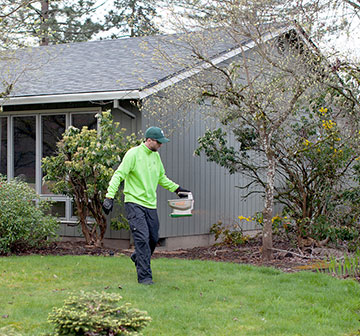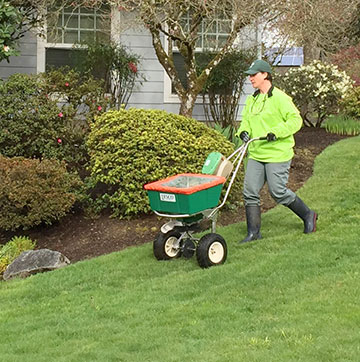 |
Previous Issues |
| Cedar Mill Community Website |
|
Search the Cedar Mill News: |
About The Cedar Mill News |
|
|||||||
| Volume 15, Issue 5 | May 2017 |
||||||
Japanese beetle eradication project forges ahead
|
|||||
 |
| An ODA contractor sprinkles the larvicide on a lawn in the Oak Hills neighborhood. It will kill the eggs and larva that are laid this summer. |
The six-week, 1,000-acre effort to eliminate the invasive insect pest is well past the halfway mark. More than 2,000 residential properties are being treated with a granular insecticide targeted at Japanese beetle grubs that will emerge later this summer. The insecticide Acelepryn– a reduced-risk product being applied only to turf grass in the area– has a track record of being safe yet effective in other Japanese beetle eradication projects in the western states.
General Tree Service is conducting the applications under the supervision of ODA. They began April 17 and should be completed over the next few weeks. Residents have given overwhelming support for the project. ODA has received 2,010 consents from residents, while a majority of the remaining properties (around 400) still have not responded to a request for consent. ODA is continuing efforts to reach property owners who have not responded and to work with the small number of residents who have expressed concerns about the project.
Each property is being treated once this spring, a process that takes roughly 10 minutes to complete for each location. Rain kept applicators away from some properties scheduled for treatment on specific days. Those properties are being re-scheduled. If you received a notice but haven’t yet responded, you are encouraged to go to the website and confirm your agreement to have your property treated so it can be completed before it’s too late.
 |
The current Japanese beetle eradication project is a long-term effort. Over a five-year period, the annual treatments are expected to start sometime each April and be finished, at the latest, by the end of May.
A record-breaking 369 Japanese beetles were found in traps placed in the area last year as well as numerous live beetles found feeding on roses and other plants. The invasive insect pest can be destructive in urban and agricultural environments. Failure to stop Japanese beetle from establishing is likely to not only result in widespread damage and economic impact, but also an increase in the use of pesticides as homeowners and agricultural operators battle the pest.
ODA entomologists remind Cedar Mill residents that the granular insecticide (larvicide) takes a couple of months to work its way into the soil where it will kill Japanese beetle grubs that hatch from eggs laid late this summer. This life stage is the most vulnerable for the Japanese beetle. Because of the timing and targeting of grubs, residents can still expect to see adult Japanese beetles over the summer months. Over the next five years, the presence and population of adult beetles should decline noticeably until the entire population is eradicated.
ODA officials continue to express gratitude to residents of Cedar Mill and Bonny Slope for their cooperation and support.
More information about the project is available at http://japanesebeetlepdx.info.
![]()
Like us on Facebook for timely updates
Published monthly by Pioneer Marketing & Design
Publisher/Editor:Virginia Bruce
info@cedarmillnews.com
PO Box 91061
Portland, Oregon 97291
© 2017